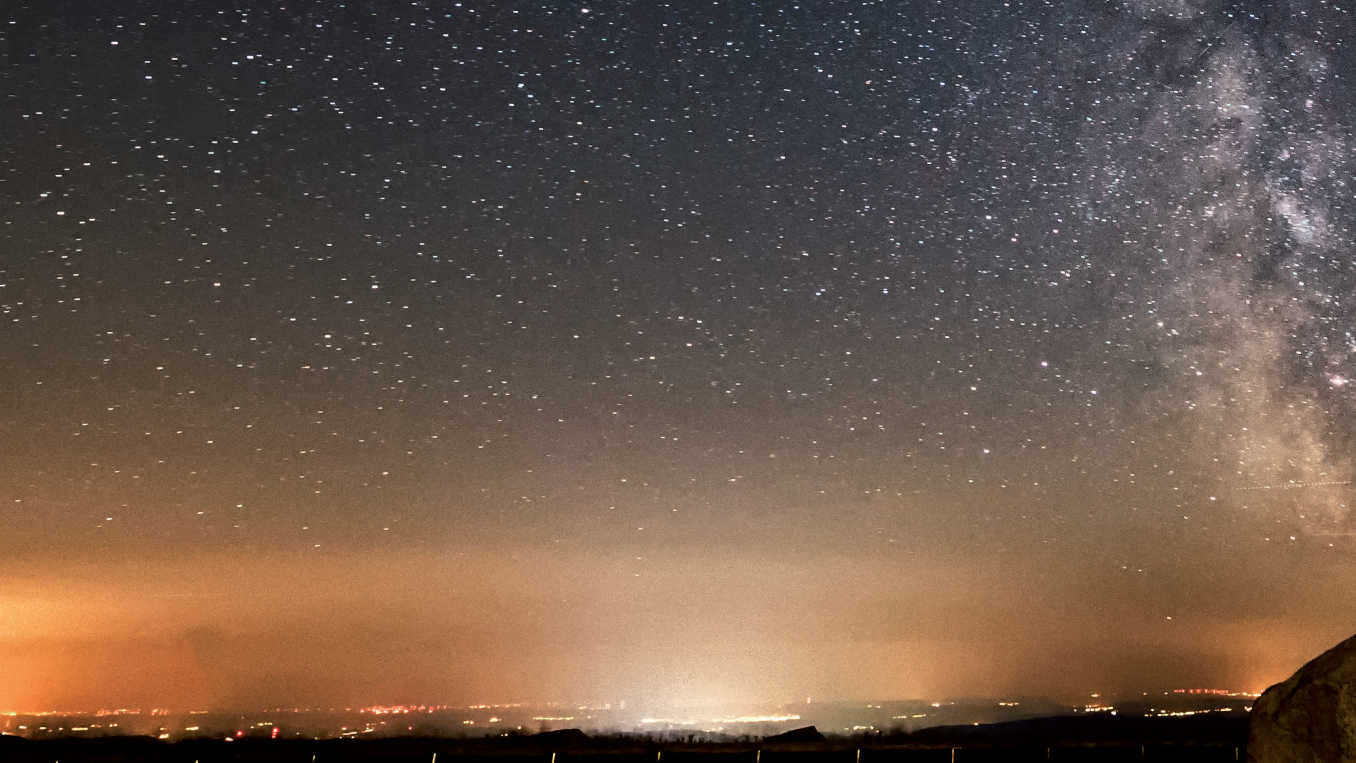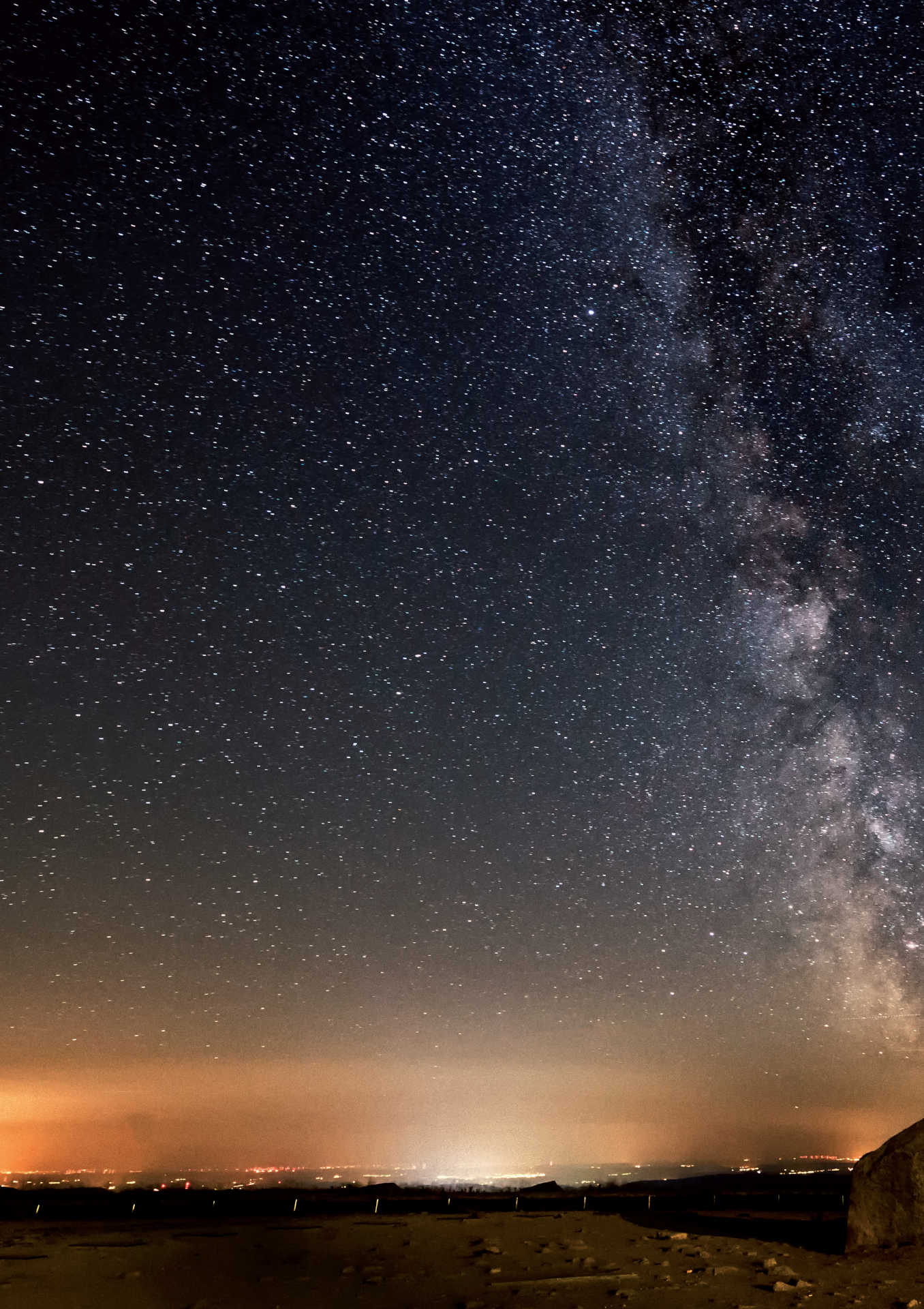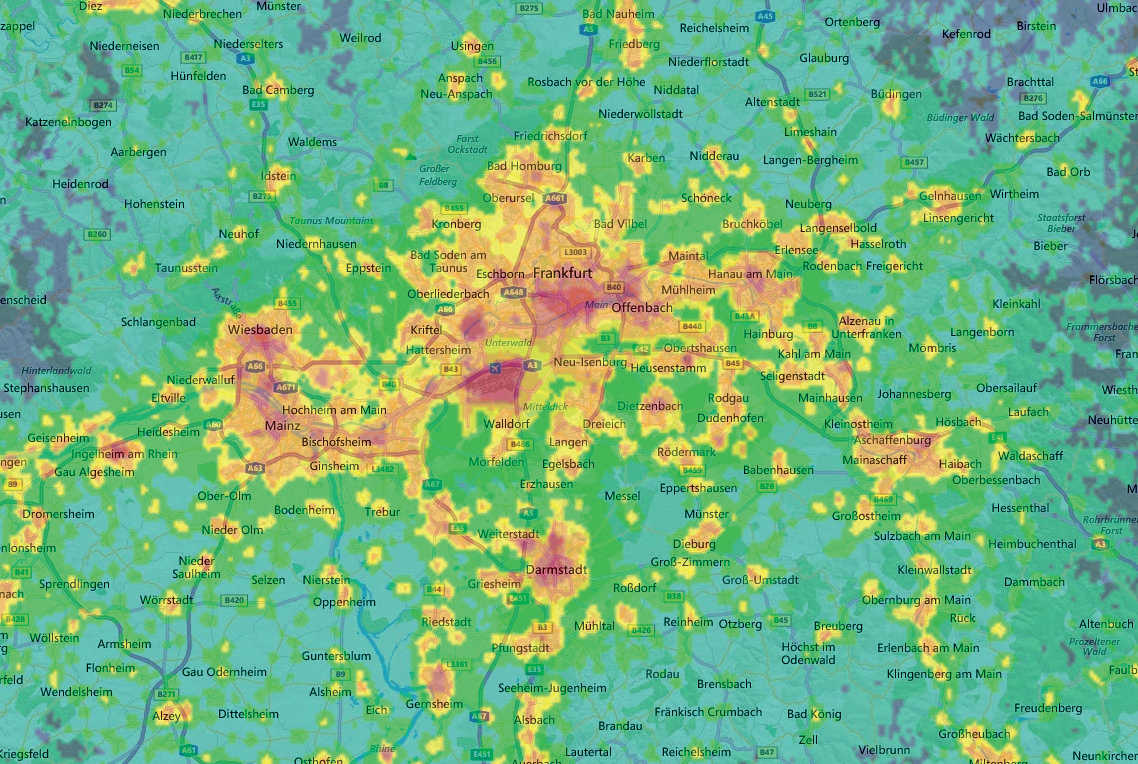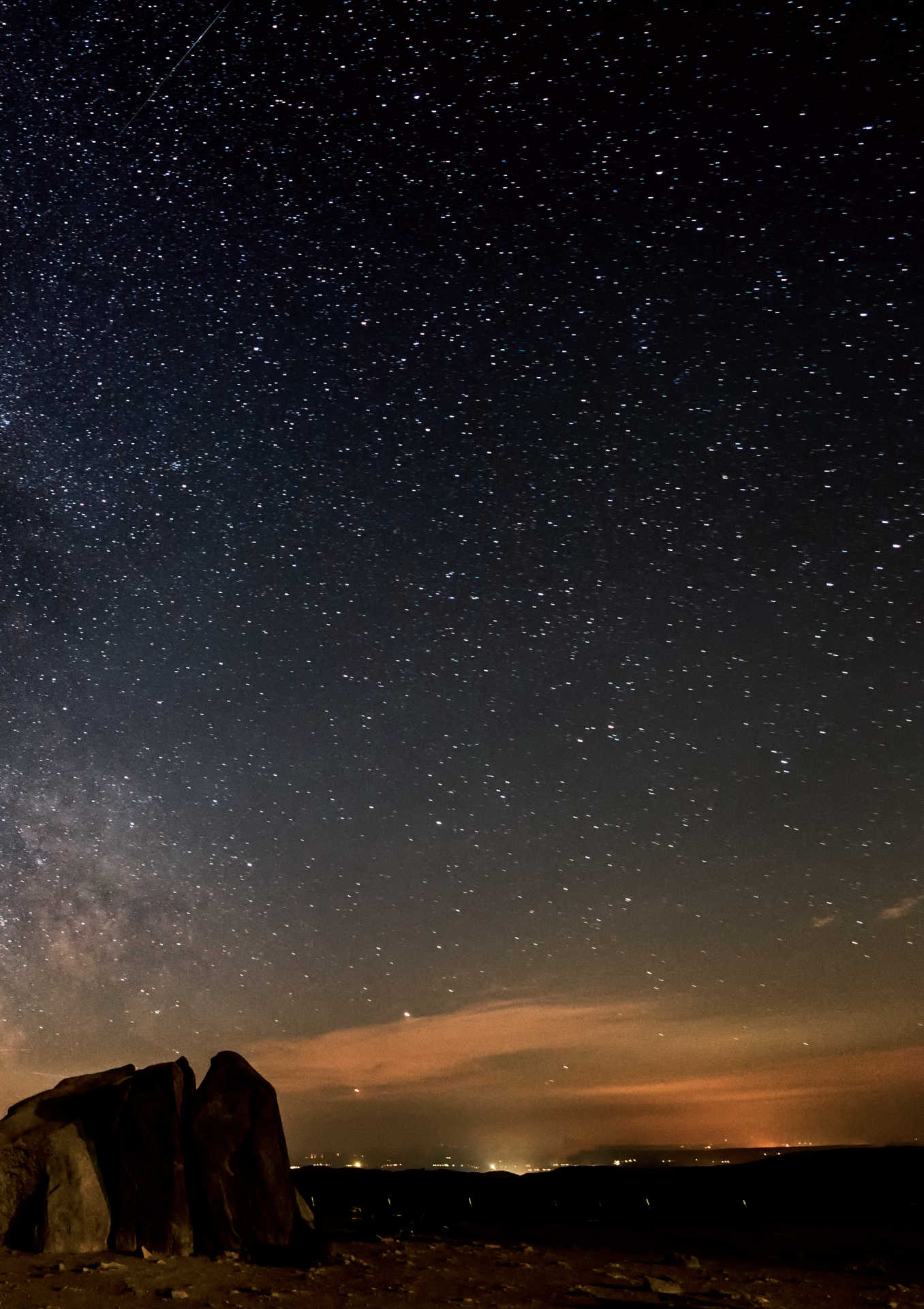The darker, the better
How to find the best possible observation site? Special maps can help you avoid light pollution.
 Oliver Henze
Oliver HenzeHere’s how to find the best possible observation site
 An observation site with no light pollution is practically impossible to find in countries like Germany. Oliver Henze
An observation site with no light pollution is practically impossible to find in countries like Germany. Oliver HenzeThere is one critical requirement to successfully observe the night sky: dark skies. Faintly glowing nebulae, galaxies or comets will appear richer in contrast against a dark background sky. But also faint, point-shaped celestial objects such as stars or the moons of Saturn become more easily visible.
Due to ever-increasing light pollution, good observation conditions can only be found outside the big cities in countries like Germany. But there, too, it is becoming increasingly difficult to find a really good observation site, as industrial complexes, street lighting, floodlighting and neon signs significantly brighten the night sky.
Far away from towns and cities
Light pollution maps can be useful as a first guide when you are searching for a dark observation site. These show more or less detail about the level of light pollution at a particular location. You can find information on the Internet using the search term "light pollution map" together with your country. A good street map or, for example, Google maps, will help you with further orientation during this first stage of the search.
When choosing a location, concentrate your search on areas at least 30km from larger cities and conurbations. You need to be at least this distance away to ensure that the residual light pollution is minimal when you look in that direction. However, you should also ensure that you are a few kilometres from smaller communities or villages, as night-time street and house lights can also brighten the night sky. The terrain should be as flat as possible and not surrounded by mountains or hills that would otherwise restrict your view of the horizon.
In daylight
As a next step, it is helpful to pay a visit to the possible observation site during the daytime. This way you get to know the route if it’s unfamiliar, and see what the conditions are like there. Ensure that access roads would still be passable especially after snow or rain, to be certain that you won’t suddenly find yourself stranded there in the middle of the night. If the view to the horizon, especially toward the south, where the stars reach their highest position above the horizon, is clear, then you have discovered a possible observation site.
 Excerpt from a light pollution map showing the Frankfurt metropolitan area. Jurij Stare, www.lightpollutionmap.info/Earth Observation Group, NOAA National Geophysical Data Center
Excerpt from a light pollution map showing the Frankfurt metropolitan area. Jurij Stare, www.lightpollutionmap.info/Earth Observation Group, NOAA National Geophysical Data CenterAnd in the dark
 Oliver Henze
Oliver HenzeHowever, you can only properly assess your new observation site in darkness. Now you will really be able to detect any light pollution from cities and towns, searchlights, nearby street lights and the dazzle of passing cars. In particular, the southern horizon should be checked again. If the Milky Way appears as a richly structured band on a clear night, you have found a good place to observe the night sky. Unfortunately, you cannot expect to find a location that is completely free of light pollution in countries like Germany. You can also check with an observatory in your area for observation location possibilities. Maybe there is already a group of stargazers who have a suitable site that you can also use. After all, observing together is double the fun.
Author: Lambert Spix / Licence: Oculum Verlag GmbH
